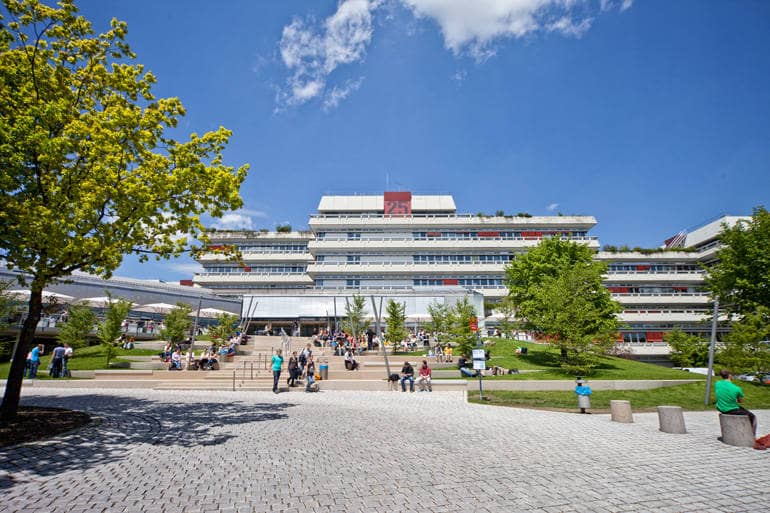Ulm innovation region: A leader in the south

© Reinhold Mayer
A lack of self-confidence has never been an accusation brought against the citizens of Ulm. More than 600 years ago, the Ulm citizens decided to build a large church with a capacity of 20.000 people - at their own expense! - although their city had not more than 8000 inhabitants. Pretentious? Megalomaniac? Not at all. Brave and visionary! Today, the Ulm Minster is the trademark of the city.
And here is the self-chosen trade name "Spitze im Süden". Again, Ulm keeps its promises. The city on the Danube is one of the most innovative, dynamic, fast-growing and liveable cities in Germany. By the way, this is not only the opinion of the Ulm citizens, but proved by scientific studies of renowned institutes. In the "Prognos-Zukunftsatlas", which analyses economic development potential in a three-year cycle, Ulm has already taken ninth place among 412 districts and independent cities in Germany - ahead of large cities like Stuttgart or Cologne.
© Stadt Ulm
The basis for this rapid rise is a healthy mix of medium-sized businesses and global players, of high-tech and trade, of innovation and tradition. The fact that economic growth can harmonise with quality of life was proved by the magazine "Healthy Living", which selected Ulm as the healthiest city in Germany.
This success is no accident. It results from the typical ability of Ulm to constantly reinvent itself and to be not afraid of taking risks. In the 80s of the 20th century, this self-concept was the basis for a new relaunch of the city. At the beginning of the decade, the economy of Ulm was mainly dominated by the manufacturing industry. Vehicle construction and electrical engineering shaped the economy with few large concerns. However, the instability of such a one-sided economic structure became apparent: within few years, the number of jobs decreased by 8.000 due to problems with the construction of commercial vehicles and the electrical industry. In 1984, the unemployment rate reached its temporary peak in Baden-Württemberg.
The Ulm response, the conception of a Science City, was groundbreaking, visionary and seemed too exaggerated to many sceptics. However, the descendants of the brave constructors of the Minster stuck once again to their guns and held on to their idea.The project on the "Oberer Eselsberg", which was initiated in 1986, is a unique model of co-operation: In spatial coexistence of university, university of applied sciences, Daimler research centre, Science Parks and affiliated institutes, which are co-financed by state and economy, a platform for the exchange of know-how and ideas was provided, which implements the technology transfer between economy and science in marketable products. Today, after more than two decades, the university, including the hospital, is the largest employer on the spot. More than 8.600 people are currently working for enterprises and institutions in the Science City, most of them as highly qualified specialists. The structural change from an industrial to a science city was successful. Once again, Ulm has managed to change from a problematic case into a "silent star", as the "Handelsblatt" put it.
The city with the Minster has also established itself as a location for university education: over 10.000 young people are currently studying at the local university or at one of the two universities of applied sciences in Ulm and the neighbouring Neu-Ulm. In contrast to many German cities, Ulm has registered significantly rising immigration rates in the past few years and the trend continues. However, Ulm citizens know: If you don't move forward, you begin to go backwards. Therefore, the city is always working on improvements of important framework conditions like the optimal compatibility of family and career, a modern education infrastructure , an intelligent estate policy, an active economic promotion and a city planning which meets the requirements of modern urbanity.
Ulm has realized early that good prospects for the future are connected with the educational level of the young generation. The campaign for better education, which was started in 2001, set an example: by now, almost 200 million Euro have been invested in the campaign. The most important element is the concept of child care, which has set its sights on improving the quantity and quality of day care. Flexible day care and excellent staffing ratios (in comparison with other cities) invite young, well-educated families to seek their professional and private future in Ulm. The city is also active as guide for commercial enterprises of all sizes and sectors. The "Stadtentwicklungsverband Ulm/Neu-Ulm" (= organisation for city development) and the "Projektentwicklungsgesellschaft Ulm" (= association for project development) convey estates, help companies move or construct new buildings.
Ulm has set the course for a successful future. This does also apply to city planning and city development, which have already caused quite a stir with buildings such as the new library or the "Neue Mitte" (= new centre) in the heart of the city. The next major project to improve the quality of the city will be the project "City Bahnhof" (= city station), which is about the rearrangement and the enhancement of the station site.
Ulm is changing without forgetting itself. Ulm is always seeking to reach "new heights" while keeping its feet on the ground. Ulm is shaping the future - come on and join us!

